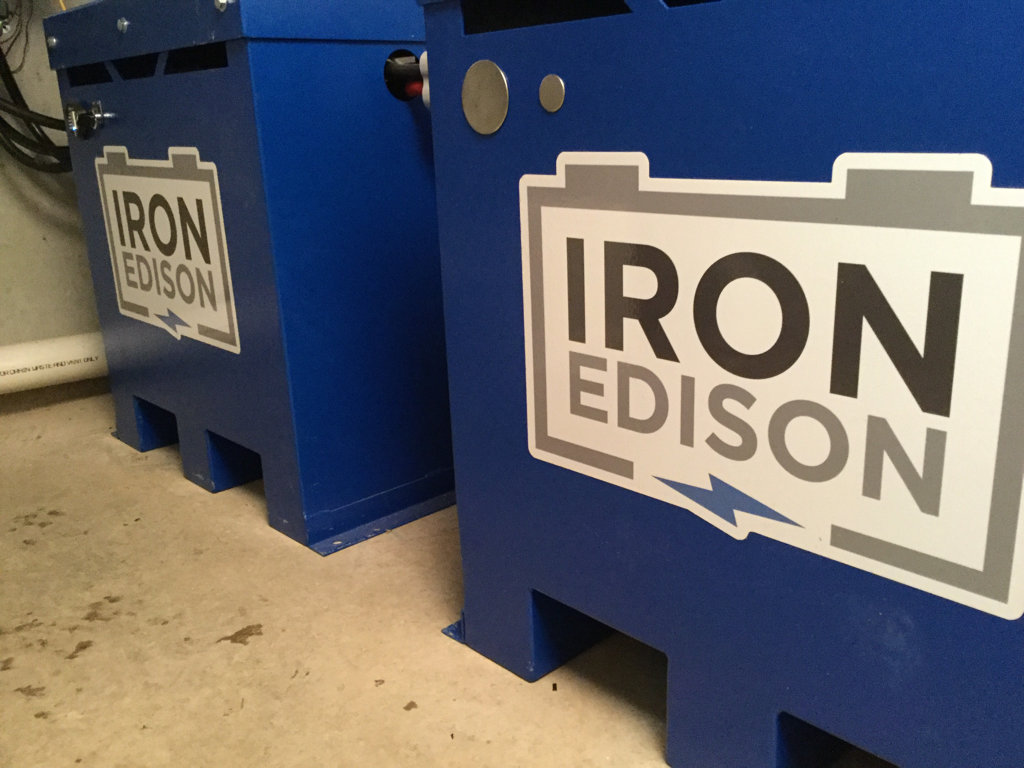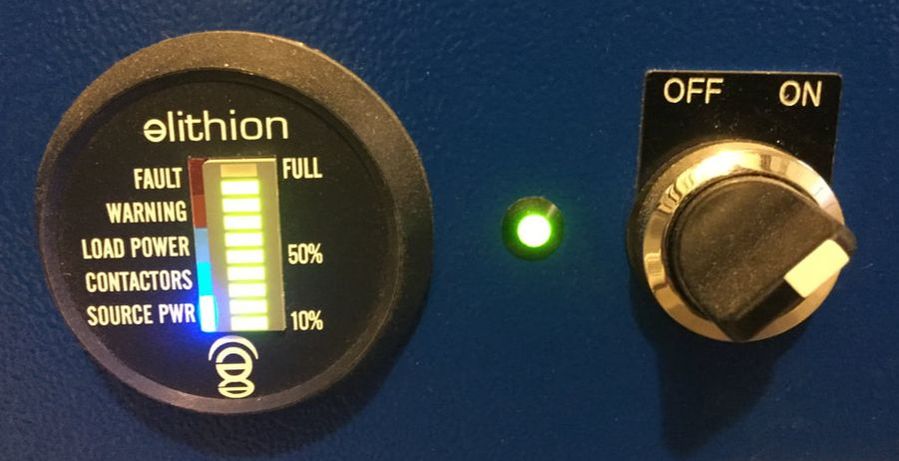|
Lithium Iron Phosphate (LiFePO4) batteries have been a hot topic these days, with good reason. They are claimed by some to be “the future” in energy storage. Some advantages over the more popular Lead Acid (LA) batteries include longer life, greater discharge rate (up to 80% Depth of Discharge claimed as well), and little to no maintenance. A customer, now a friend of ours, who enjoys testing the latest technology, decided to give Iron Edison’s LiFePO4 Battery a try. We helped with the transition of his previous 48 Volt Lead Acid battery bank (that we installed in 2012), which consisted of sixteen Trojan L-16 RE Bs (740 Amp Hour total), to his current 48 Volt 360 Amp Hour LiFePO4. Normally, with Iron Edison, the Lithium batteries are housed in one large metal enclosure. However, as there were sizing restraints (concerning the entrance of the underground structure where the Balance of Systems is contained), Iron Edison configured the battery system in two separate smaller enclosures. These were easily paralleled together with the provided Anderson quick connect cables to complete the 48 volt system. Iron Edison boasts of their batteries being fully compatible with leading industry equipment, such as Schneider Electric, SMA, Magnum, and MidNite Solar. Our customer was already equipped with a Magnum MSPAE4448 Inverter/Charger and a MidNite Solar Classic 200 Solar Charge Controller. Once the battery set (S/N 011) was installed, it took some time working with the manufacturer to "dial in" the Classic 200's set pionts to completely charge the battery bank from 50% State of Charge (SOC) to 100% SOC in one sunny day. As of today, the change in the "end amp" set point seems to have mitigated the issue.
It’s only been three months since the batteries have been commissioned, but we’ve put together a preliminary list of pros and cons that we have observed during this period. There are some things we cannot comment on, for example long life and increased life discharge cycles, but we’ll continue to update the list if anything of importance arises. Pros:
Cons:
We still have much to learn, test and discuss about Lithium Iron Phosphate batteries in Renewable Energy applications. Have any experience with using Lithium Iron in the Solar Electric world you’d like to share? Please comment below. We’d love to hear your feedback!
0 Comments
Leave a Reply. |
|


